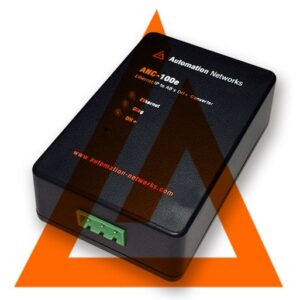It’s all about choice: EtherNet/IP and unicast and multicast traffic
Source: Wanda Reiss (blog.schneider-electric)
End devices within industrial networks such as a drive or an I/O may report to a single, or to multiple, devices such as controllers or SCADA. Inversely, a controller or software may control, configure or receive information from multiple end devices. Devices communicating with each other individually do so using the unicast communication pattern. Devices communicating with a community of devices at the same time do so using the multicast communication pattern.
I’ve recently seen some misleading information about the use of EtherNet/IP and Profinet network topologies with respect to their support of unicast and multicast communication protocols. This information claims that Profinet supports unicast communication, while EtherNet/IP supports only multicast communication, and thus is more complex than Profinet. In fact, EtherNet/IP supports both unicast and multicast traffic. Moreover, it is not essential to use multicast traffic with EtherNet/IP; any simple network will do just fine using unicast traffic.
Multicast traffic over EtherNet/IP delivers benefits that reduce network traffic load as it facilitates the sending of information common to multiple but independent devices in one communication, thus reducing bandwidth. Unicast traffic can achieve the same goal – to communicate needed information to end devices – but the communication must be repeated for every device that needs that information.
In order to realize the full benefits of using multicast communication in Internet networks, including reduced network traffic as mentioned, it is advisable to also implement stringent network management practices – for example the network will require flooding prevention mechanisms in order to safely use multicast traffic.
All good Internet-based industrial network topologies will already have flooding prevention and traffic prioritization mechanisms in place (with standard IT protocols) regardless of the type of traffic on the network, but this becomes particularly important as networks become more complex. Flood prevention mechanisms can also help in protecting a network from cybersecurity threats by pruning I/O data traffic and preventing eavesdropping on that traffic from unused ports on switches. In addition, Quality of Service (QoS) ensures the most important information is delivered across the network first.
So when it comes to EtherNet/IP and Profinet, and unicast and multicast, it’s not a case of what is “better”; it’s a case of which topology and communication protocol suits the particular industrial network being designed. Selecting EtherNet/IP means the choice to select unicast for simple networks, or multicast if performance or flood prevention is of concern and if standard switches, stand alone or embedded in devices, are used by the network. It’s the selection, or the choice, that we see as so important for our customers today.
And for anyone who designs an industrial network, choice is important. Questions like: how large is the system; how many PLCs or devices are there; how many of those need to receive the same messages; are all taken into consideration when designing an industrial Internet-based architecture. So it’s important to know the implications of the choices made concerning network topologies and communications protocols for industrial networks.
So, Profinet and EtherNet/IP and unicast and mulitcast in Internet architectures – I do not dispute that Profinet supports unicast communication, but I stress the point that the EtherNet/IP supports both unicast and multicast communication methods with standard IT protocols. Like I said, it’s not a matter of “better”; it’s a matter of choice.




